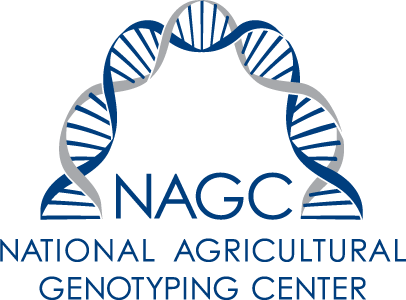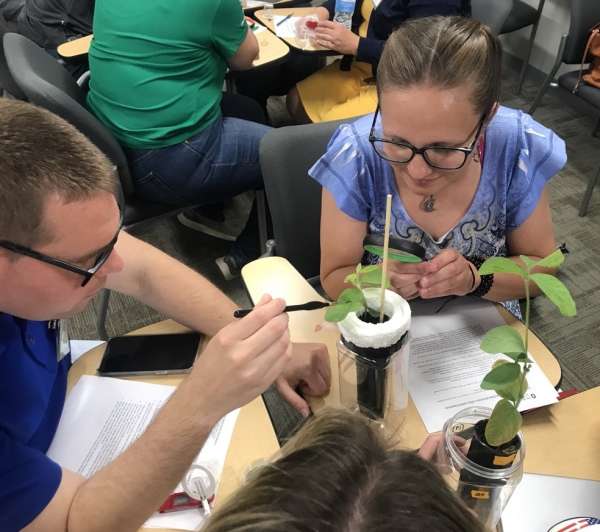Honey and biotechnology
Lessons
# Honey as a sterile material
Students investigate if honey should be used as a wound dressing. This experiment uses raw honey and determines its sterility using serial dilution and spread plating methodology to enumerate the number of bacteria within a raw sample.
Files
# Pollen extraction and bioinformatics
Students examine pollen from samples of honey to determine what plants it came from or apply it to a forensic case to help solve a crime. Students use bioinformatics to determine the floral preferences of bees by analyzing DNA markers found in pollen and honey samples. DNA sequences are found at grownextgen.org/go/honey
Files
# Evaluating the chemical composition of honey
Students use lab skills to compare honey samples, including performing serial dilution, streaking plates, and examining samples under the microscope.
Files
# Sensory testing of honey
Students evaluate honey on sensory characteristics, such as color, aroma and taste.
Files
Teacher background
Honey is the oldest wound dressing material known to humans. Per the National Institute of Health, studies report that honey has antioxidant, antibacterial, and anti-inflammatory properties. It can be used as a wound dressing to promote rapid and improved healing. These effects are due to honey’s antibacterial action. Healing is also promoted due to its high acidity, osmotic effect, antioxidant content and hydrogen peroxide content. Check out the antibacterial properties by completing Honey as a sterile material.
Honey is one of the most widely adulterated products globally, particularly the organic variety, a high-value item prized for its unique properties, such as being a good source of antioxidants. According to the U.S. Food Fraud database, it is the third most targeted food for adulteration, after milk and olive oil. It’s also financially significant: the global honey market size was valued at USD 9.21 billion in 2020, and is expected to grow at a compound annual growth rate of 8.2%.
How might we detect this widespread adulteration? Analyzing pollen found in honey is known as melissopalynology. This can be used to determine the foraging preferences of bees, to confirm that honey is from the source listed on the label, and to confirm that honey is not adulterated. Extracting pollen from one or more samples of honey then analyzing the pollen under a microscope can help to confirm the source of the honey. This analysis allows inferences to be made about the geographical locations and genera of plants present where bees were pollinating. A flame test may also help to detect added substances, such as water.
An extension to the initial lab might include forensic palynology, the science of analyzing pollen and spores to help solve criminal cases. Microscopic pollen grains from plants of a certain area are assembled in ratios to one another that are unique to that area. When compared with pollen samples from a suspect’s clothing, shoes, or vehicle, these “pollen prints” can point criminal investigators to a specific geographical location, prove or destroy alibis, and link a suspect to the scene of a crime.
An additional method of testing honey samples is to extract DNA in order to specifically identify which flowers bees visited. The bioinformatics lesson includes DNA sequences that point to specific floral origins of honey.
Biotech labs are in the business of determining the safety and authenticity of products. The chemical composition of honey and its sensory characteristics can vary widely between samples.

Next gen science standards
Science and engineering practices
- Analyzing and interpreting data
- Using mathematics and computational thinking
- Obtaining, evaluating, and communicating information
Crosscutting concepts
- Cause and effect
- Systems and system models
- Energy and matter
- Structure and function
Disciplinary core ideas/content
- ESS2D Weather and climate
- ESS2E Biogeology
- ESS3A Natural resources
- LS1C Organization for matter and energy flow in organisms
- LS1D Information processing
- LS2A Interdependent relationships in ecosystems
- LS2B Cycles of matter and energy transfer in ecosystems
- LS2C Ecosystem dynamics, functioning and resilience
- LS4D Biodiversity and humans
- PS3D Energy in chemical processes and everyday life








Share this